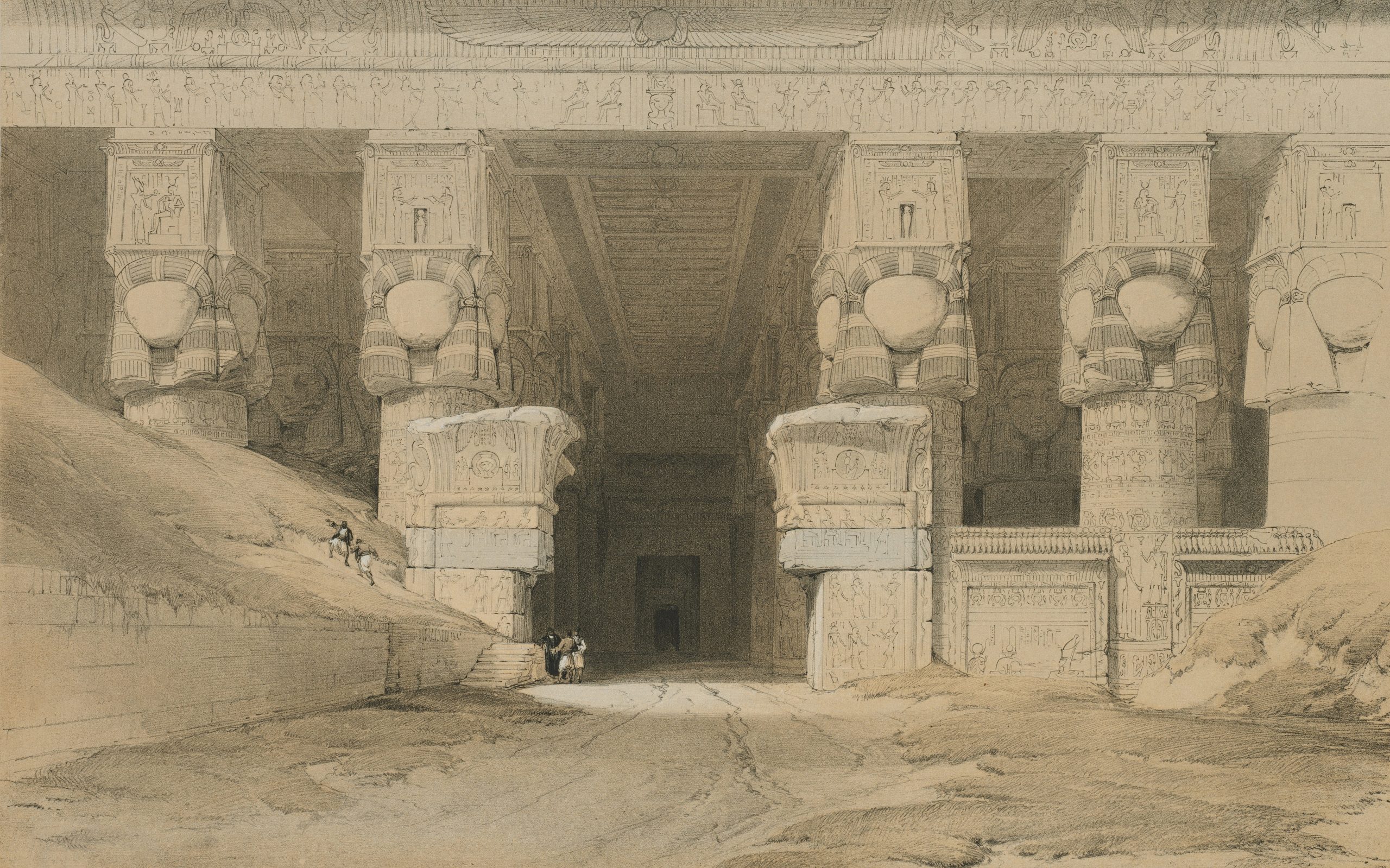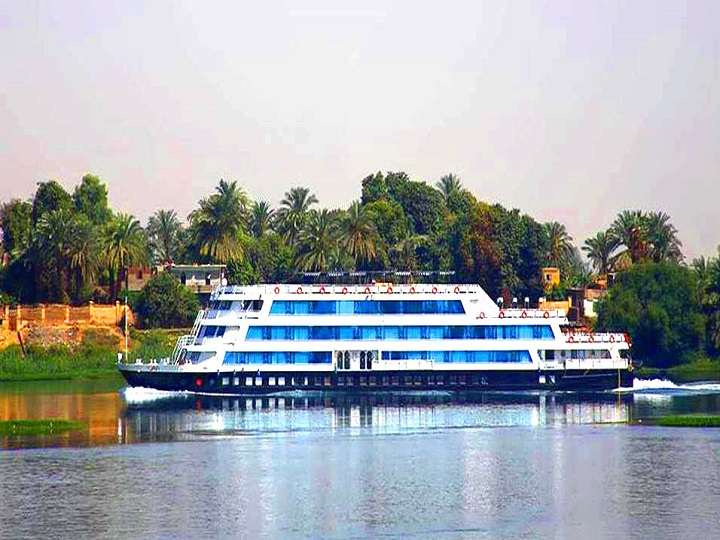This website uses cookies so that we can provide you with the best user experience possible. Cookie information is stored in your browser and performs functions such as recognising you when you return to our website and helping our team to understand which sections of the website you find most interesting and useful.

By admin on 03 Jan 2025
[ez-toc]
The Middle East, a region rich in ancient history and vibrant culture, offers travelers a unique and unforgettable experience. From the bustling souks of Marrakech to the awe-inspiring ruins of Petra, the best Middle Eastern countries to visit combine time-honored traditions with modern marvels. Whether you’re planning a family vacation, a romantic getaway, or an adventurous solo journey, the Middle East has something for everyone.
In this Middle East travel guide, we’ll explore top destinations and provide you with Middle East vacation ideas that showcase the diversity of the region. Whether you’re seeking family-friendly spots, romantic escapes, or exciting activities, the Middle East is a treasure trove of adventure, relaxation, and cultural immersion.
The Middle East is a region of captivating contrasts, where ancient history, modern luxury, and breathtaking landscapes come together. Each country offers its own unique experience, from ancient ruins to vibrant cities and stunning natural wonders. Here are some of the best Middle Eastern countries to visit for an unforgettable journey.
Discover the Best Middle Eastern Countries to Visit
- Egypt: Unveiling the Mysteries of the Pharaohs
Egypt is a must-visit for history enthusiasts, offering some of the world’s most iconic landmarks. The Great Pyramids of Giza, the Sphinx, and the temples of Luxor are just the beginning. Explore the ancient tombs in the Valley of the Kings, or take a relaxing cruise down the Nile River. Egypt is a treasure trove of archaeological wonders, offering travelers a direct link to the past. With its rich history, vibrant culture, and bustling markets, Egypt is a timeless destination for those wanting to delve deep into the mysteries of the Pharaohs.
Egypt is one of the most fascinating countries in the Middle East that everyone should visit at least once in their lives. The Great Pyramids of Giza, which include the Ggreat Pyramid of Khufu. Take a stroll in the footsteps of the famous pharaohs entombed within the pyramids. Egypt is also known for its historic temples, monuments and museums. Apart from Cairo and the pyramids, Egypt has a lot more to offer. Luxor and Aswan are must-see destinations if you want to relax on a sumptuous Nile cruise while admiring the grandeur of historical artifacts and structures. Learn more about our Egypt tours.
- Jordan: Exploring Ancient Petra and the Dead Sea
Jordan is home to one of the most famous archaeological sites in the world—Petra, the ancient city carved into red sandstone cliffs. A UNESCO World Heritage site, Petra offers an incredible glimpse into Jordan’s past and is a must-see for any traveler. Beyond Petra, Jordan’s natural beauty is just as captivating. The Dead Sea, known for its therapeutic properties and extreme salt concentration, offers a unique floating experience. Whether you’re exploring ancient ruins or relaxing by the salty waters, Jordan is a country full of wonders waiting to be explored.
Jordan is a stunning Middle Eastern country with a lot to offer. Jordan, often known as the “Lawrence of Arabia,” is a must-see for anybody interested in seeing the Middle East. It is famous for its ancient civilizations and structures. Petra, a picturesque city in Jordan that is estimated to be nearly 2000 years old, is the most well-known. Because hospitality is such an important element of Jordanian culture, you will be greeted warmly wherever you go. Discover the best time to visit Jordan.
- United Arab Emirates: Experiencing Luxury and Innovation in Dubai and Abu Dhabi
The United Arab Emirates (UAE) is the epitome of modern luxury and innovation, with Dubai and Abu Dhabi leading the way. Dubai’s futuristic skyline, home to the world’s tallest building, the Burj Khalifa, offers a blend of shopping, entertainment, and stunning architecture. Abu Dhabi, with its grand mosques and cultural attractions like the Louvre Abu Dhabi, provides a perfect mix of tradition and progress. The UAE is a destination for those seeking high-end experiences, whether it’s shopping, dining, or indulging in world-class resorts.
If you’re looking for a vibrant and opulent vacation spot, go no further than Dubai. Its futuristic buildings, opulent malls, desert adventures, and fusion of contemporary luxury with traditional Arabic culture have made it famous.
Some of the many appealing aspects of Dubai as a vacation spot are as follows:
Top Attractions
- The Burj Khalifa is the highest building in the world. Observation decks provide spectacular panoramic views of the city and desert.
- The Dubai Mall is one of the world’s largest shopping malls, including attractions such as an aquarium, ice rink, and virtual reality park.
- The Burj Khalifa Lake is the stage for the mesmerizing Dubai Fountain, a water performance that is both musical and illuminated.
- Palm Jumeirah: A man-made island shaped like a palm tree, home to luxury hotels like Atlantis The Palm.
- Dubai Marina is known for its skyscrapers, nightlife, and waterfront dining.
- The Museum of the Future is an aesthetically breathtaking structure that displays cutting-edge ideas and technology.

- Oman: A Land of Natural Beauty and Traditional Charm
Oman offers a refreshing contrast to the high-rise cities of the UAE. Known for its stunning landscapes, Oman is home to rugged mountains, pristine beaches, and vast deserts. The country’s traditional charm is evident in its forts, ancient towns, and warm hospitality. Muscat, the capital, combines modernity with old-world charm, offering a mix of cultural attractions and coastal beauty. Oman is ideal for travelers looking for a blend of adventure and authenticity, with activities like hiking, dhow cruises, and exploring the Al Hajar Mountains.
Oman is an often-overlooked gem in the Middle East, offering a completely different experience from glitzier neighbors like Dubai. It’s a destination rich in natural beauty, authentic Arabian culture, and deep-rooted traditions. If you’re seeking dramatic landscapes, ancient history, and warm hospitality without the crowds, Oman is a fantastic choice.
With a choice of Oman travel packages, day tours, and shore excursions, Oman can be enjoyed all year. You can even combine Oman with another gorgeous Middle Eastern country, such as Egypt, Jordan, or others.

Top 5 Must-See Middle Eastern Cities
The Middle East is home to some of the most fascinating cities in the world, each with its own unique blend of history, culture, and modern attractions. From ancient streets to futuristic skylines, here are the top five must-see cities in the Middle East for an unforgettable travel experience. Read more about the history of the region.
- Cairo, Egypt: A City Steeped in History
Cairo, the capital of Egypt, is a city where the past and present collide. With its ancient monuments, including the iconic Pyramids of Giza, the Sphinx, and the Egyptian Museum, Cairo offers a direct link to the wonders of ancient Egypt. But Cairo isn’t just about history; —it’s also a bustling metropolis filled with vibrant markets, lively street scenes, and delicious cuisine. The city’s unique blend of modern and ancient, along with its rich cultural heritage, makes Cairo an essential stop for any traveler to the region.
- Jerusalem, Israel: A Holy City for Three Religions
Jerusalem is one of the most spiritually significant cities in the world, sacred to Christians, Jews, and Muslims. The city’s Old Town is a UNESCO World Heritage site and home to landmarks such as the Western Wall, the Dome of the Rock, and the Church of the Holy Sepulchre. The deep historical and religious significance of Jerusalem makes it a powerful destination for those seeking to explore the roots of three major world religions. Beyond its sacred sites, Jerusalem also offers vibrant markets, incredible food, and a rich blend of cultures.
- Dubai, UAE: A Modern Architectural Wonder
Dubai is a city that seems to defy limits. Known for its futuristic skyline and incredible architectural feats, including the Burj Khalifa, the tallest building in the world, Dubai is the epitome of modernity and innovation. Beyond its towering skyscrapers, Dubai offers luxury shopping, world-class dining, and thrilling attractions like the Dubai Mall and Palm Jumeirah. Dubai is a hub for business, entertainment, and tourism, making it a must-visit city for those seeking cutting-edge experiences.
- Muscat, Oman: A Capital City Blending Tradition and Modernity
Muscat, the capital of Oman, offers a peaceful blend of traditional Arabian charm and modern sophistication. The city is famous for its beautiful white-washed buildings, stunning mosques like the Sultan Qaboos Grand Mosque, and lush gardens. Muscat’s waterfront setting along the Arabian Sea, combined with its historic forts, bustling souks, and vibrant arts scene, makes it an ideal destination for travelers seeking a more relaxed yet culturally rich experience in the Middle East.

- Beirut, Lebanon: A Vibrant Hub of Culture and Nightlife
Beirut, Lebanon’s capital, is known for its dynamic cultural scene, vibrant nightlife, and rich history. Often called the “Paris of the Middle East,” Beirut blends its French colonial architecture with modern, cosmopolitan flair. Visitors can explore the city’s museums, historic sites, and trendy cafes, or dive into its lively nightlife with world-class clubs and bars. Beirut’s food scene, a fusion of Mediterranean and Middle Eastern flavors, is another highlight. With its unique combination of old-world charm and modern excitement, Beirut is a city that offers something for everyone.

Exploring the Rich Culture and History of the Middle East
The Middle East is a treasure trove of rich culture, ancient history, and timeless traditions. With its fascinating blend of ancient civilizations, sacred sites, vibrant markets, and artistic heritage, the region offers a deeply immersive experience for every traveler.
- Ancient Civilizations: Tracing the Footsteps of Empires
The Middle East is the birthplace of some of the world’s oldest civilizations. From the mighty Egyptian pharaohs to the Persians, Greeks, and Romans, empires once ruled here, leaving behind iconic landmarks like the Pyramids of Giza, the ruins of Persepolis, and the majestic Petra. Tracing the footsteps of these ancient empires allows visitors to connect with the region’s storied past and witness firsthand the incredible feats of engineering and artistry that have shaped the world.
- Religious Significance: Discovering Sacred Sites
The Middle East is home to some of the world’s most important religious sites, making it a place of profound spiritual significance. Jerusalem, a holy city for Christians, Jews, and Muslims, is home to sacred landmarks like the Western Wall, the Dome of the Rock, and the Church of the Holy Sepulchre. Additionally, cities like Mecca and Medina draw millions of Muslim pilgrims each year, offering a unique insight into the spiritual practices that have shaped the region.
- Traditional Bazaars: Immersing Yourself in Local Commerce
No visit to the Middle East is complete without exploring its traditional bazaars, or souks. These bustling markets are a sensory feast, offering everything from spices, textiles, and jewelry to handcrafted pottery and exotic perfumes. Wandering through the narrow alleyways of markets like Istanbul’s Grand Bazaar or Cairo’s Khan el-Khalili provides a glimpse into local commerce, where merchants sell their goods with skill and passion, offering visitors a taste of daily life in the Middle East.
- Artistic Expressions: From Calligraphy to Carpets
The Middle East’s artistic legacy is rich and diverse, with traditions like Islamic calligraphy, intricate tile work, and exquisite carpet weaving. Calligraphy, often used to decorate sacred texts and architectural landmarks, is a revered art form in the region. Similarly, Persian carpets are celebrated worldwide for their quality and intricate designs. Visiting local galleries, markets, and workshops offers a chance to appreciate these timeless crafts while learning about the cultural significance behind each art form.
Planning Your Middle Eastern Adventure: A Practical Guide
The Middle East is a captivating and diverse region to explore, offering a range of experiences, from ancient historical sites to modern metropolises. However, to ensure a smooth and enjoyable trip, planning ahead is essential. Here’s a practical guide to help you navigate your Middle Eastern adventure with ease.
- Visa Requirements: Navigating Entry Regulations
Visa requirements vary from country to country in the Middle East. Some countries, like Egypt and Jordan, offer visa-on-arrival options for many nationalities, while others, such as the United Arab Emirates, require an online e-visa. It’s crucial to check the specific entry requirements for your destination well in advance. Make sure your passport is valid for at least six months beyond your arrival date and have proof of onward travel, as these are standard entry requirements in many Middle Eastern countries.
- Currency and Budgeting: Managing Your Finances
Each Middle Eastern country has its own currency. For instance, Egypt uses the Egyptian Pound (EGP), Jordan uses the Jordanian Dinar (JOD), and the UAE uses the Dirham (AED). Currency exchange rates can fluctuate, so it’s wise to research current rates and consider exchanging some money before you arrive. Many places accept credit and debit cards, but cash is often preferred in local markets. Budgeting for your trip will depend on your style. —Lluxury travelers can expect higher prices, especially in cities like Dubai, while budget travelers will find affordable options for food, transport, and accommodation.
- Accommodation Options: From Luxury Hotels to Budget-Friendly Hostels
Accommodation in the Middle East caters to all types of travelers. If you prefer luxury, cities like Dubai and Doha boast world-class hotels and resorts with opulent amenities. For budget-conscious travelers, hostels, guesthouses, and affordable hotels are readily available, especially in cities like Cairo, Amman, and Istanbul. Booking accommodations in advance is recommended, especially during peak travel seasons.
- Transportation: Getting Around the Region
Getting around the Middle East can be an adventure in itself. Most major cities have well-established public transport systems, including metros (in Cairo and Dubai) and buses. Taxis and ride-hailing apps like Uber and Careem are common and convenient options. If you’re traveling between countries, flights are the quickest option, with many airlines offering regional connections. In rural or remote areas, renting a car or joining organized tours can be a more convenient option.
- Cultural Sensitivity: Respecting Local Customs and Traditions
The Middle East is home to a diverse range of cultures, languages, and religious practices, so it’s essential to approach your visit with cultural sensitivity. Dress modestly, especially in conservative countries like Saudi Arabia and Iran. Respect local traditions, such as fasting during Ramadan, by avoiding eating or drinking in public during daylight hours.
Always ask before taking photos, particularly in religious sites, and be mindful of the cultural and social norms regarding gestures and public behavior. Showing respect for local customs will ensure a warm welcome wherever you go.
Best Middle Eastern Destinations for Different Travelers
The Middle East is a region that offers something for every type of traveler. Whether you’re a history enthusiast, an adventure seeker, or a luxury traveler, this region is filled with diverse experiences. Here’s a breakdown of the best Middle Eastern destinations tailored to different types of travelers.
- For History Buffs: Exploring Ancient Ruins and Historical Sites
For history lovers, the Middle East is a dream come true. Egypt, with its majestic Pyramids of Giza, the Sphinx, and the Valley of the Kings, offers unparalleled ancient wonders. Jordan’s Petra, an ancient city carved into red sandstone cliffs, is another must-visit historical site. In Iraq, the ruins of Babylon, and in Iran, the Persepolis ruins, are iconic landmarks. These destinations provide an incredible journey through time, allowing visitors to walk in the footsteps of ancient civilizations and explore well-preserved archaeological sites.
- For Adventure Seekers: Desert Safaris and Outdoor Activities
Adventure seekers will find plenty of thrills in the Middle East’s vast deserts and rugged landscapes. In the UAE, Dubai and Abu Dhabi offer exhilarating dune bashing experiences in the Arabian Desert. Jordan’s Wadi Rum, with its dramatic sandstone mountains and vast desert, is perfect for hiking, rock climbing, and jeep safaris. Oman’s Wahiba Sands offers an authentic Bedouin desert experience, where travelers can enjoy camel trekking, star-gazing, and desert camping. These destinations offer countless outdoor activities that bring excitement and adventure into the heart of the desert.
- For Luxury Travelers: Indulging in Opulent Experiences
The Middle East is a top destination for luxury travelers seeking indulgence and opulence. Dubai is known for its ultra-luxury hotels like the Burj Al Arab, extravagant shopping malls, and fine dining experiences. Abu Dhabi’s Emirates Palace offers unmatched luxury with its gold-plated interiors and private beaches. Qatar, with its luxurious resorts and shopping experiences, offers similar grandeur. Whether it’s private yacht charters, spa treatments, or gourmet dining, the Middle East’s high-end destinations provide the ultimate luxury experience.
- For Foodies: Savoring Middle Eastern Cuisine
The Middle East is a paradise for foodies. Each country in the region boasts a rich culinary heritage, with flavorful dishes that have been passed down through generations. In Lebanon, enjoy traditional mezze, such as hummus, baba ganoush, and tabbouleh. Istanbul, Turkey, offers mouthwatering kebabs and baklava, while Egypt’s koshari (a mix of rice, pasta, and lentils) is a local favorite. The spices and flavors of the region, from Persian stews to Moroccan tagines, make every meal an adventure for the taste buds.
- For Families: Kid-Friendly Activities and Attractions
The Middle East is also an excellent destination for families. Dubai is home to family-friendly attractions such as the Dubai Aquarium, Legoland, and the Wild Wadi Waterpark. In Egypt, a Nile River cruise offers families the chance to explore ancient temples and tombs while enjoying a relaxing voyage. Jordan’s Petra and Wadi Rum offer opportunities for both educational and adventurous activities. The region’s blend of cultural experiences, modern attractions, and natural beauty make it ideal for family travel.
Safety and Security in the Middle East
When traveling to the Middle East, safety and security should be top priorities. The region is diverse, and conditions can vary greatly depending on the country. However, with the right preparation and understanding, you can have a safe and enjoyable experience. Here’s what you need to know before you go.
- Understanding Regional Politics: Staying Informed
The political climate in the Middle East can fluctuate, so it’s essential to stay informed. While many parts of the region are peaceful and welcoming, there are areas with ongoing political instability. Before traveling, research the local political situation and any potential tensions in the region. Following news outlets and consulting government resources will help you stay updated on developments and avoid regions with potential unrest.
- Travel Advisories: Checking for Potential Risks
Travel advisories issued by your government are crucial tools for assessing safety. These advisories provide up-to-date information on any risks, including natural disasters, civil unrest, or health concerns in specific countries. Websites like the U.S. Department of State or the UK Foreign Office regularly update their travel warnings. Checking these advisories before departure helps you make informed decisions about your trip and plan accordingly.
- Local Laws and Customs: Respecting Cultural Norms
Every country in the Middle East has its own set of laws and cultural practices. Respecting local customs is essential to ensure a positive travel experience. For example, in some countries, public displays of affection are frowned upon, while others require modest dress in religious sites. Understanding these cultural norms not only shows respect but also helps you avoid unintentionally breaking any laws or offending locals.
- Emergency Contacts: Knowing Who to Call
Before you travel, make sure to have emergency contacts for your destination. Familiarize yourself with local emergency numbers for police, medical assistance, and fire departments. Additionally, having contact information for your embassy can be invaluable in case of an emergency. It’s also a good idea to have a local SIM card or access to international communication options to stay connected while traveling. Plan your itinerary with our expert travel agents.
FAQ
FAQ About Middle East Travel Destinations
Categories
- Egypt and Jordan Tours (12)
- Egypt Destinations (26)
- Egypt Nile Cruises (40)
- Egypt Sightseeing (14)
- Egypt Tour Packages (17)
- infographics (1)
-

Nile Cruisers Reviews
25 Mar 2025
-

Why Choose Nile Cruisers to Book Your Egypt Nile Cruise?
12 Dec 2025
-

Celebrate Christmas in Egypt: Best Egypt Travel Tour Packages for Year-End Getaways
12 Dec 2025
-

Make Your Year-End Special: Festive Egypt Tour Packages for Winter Travel
12 Dec 2025
-

The Lake Nasser Luxury Cruise Ships
09 Dec 2025
-

Sacred Egypt – Spiritual Tours
07 Dec 2025
-

Nile Cruise from Cairo to Aswan
06 Dec 2025
-

Nile Cruisers Reviews
25 Mar 2025
-

Why Choose Nile Cruisers to Book Your Egypt Nile Cruise?
12 Dec 2025
-

Celebrate Christmas in Egypt: Best Egypt Travel Tour Packages for Year-End Getaways
12 Dec 2025
-

Make Your Year-End Special: Festive Egypt Tour Packages for Winter Travel
12 Dec 2025
-

The Lake Nasser Luxury Cruise Ships
09 Dec 2025












Comments